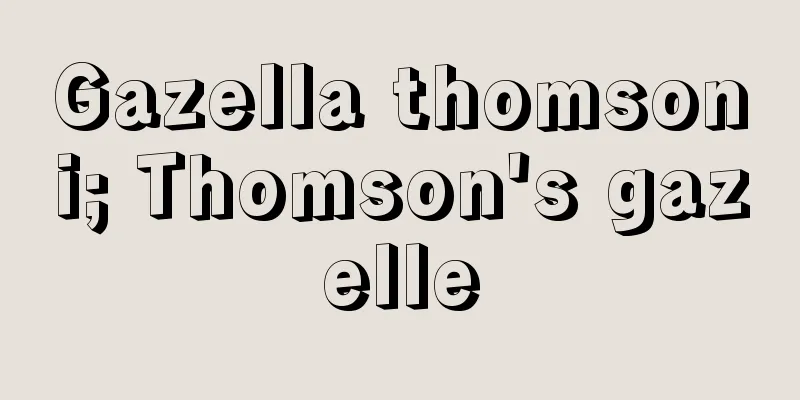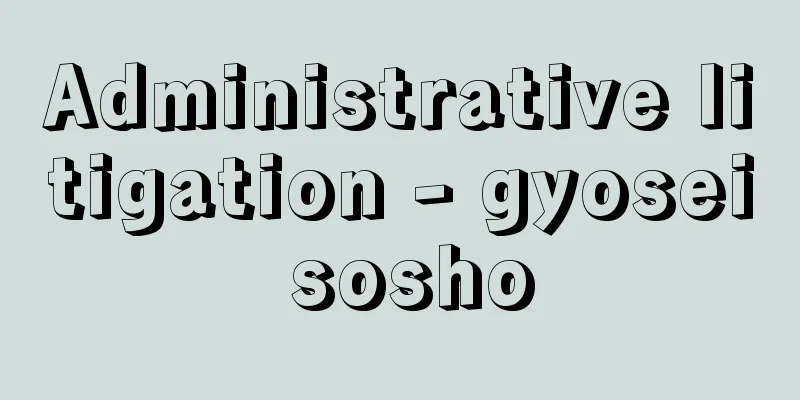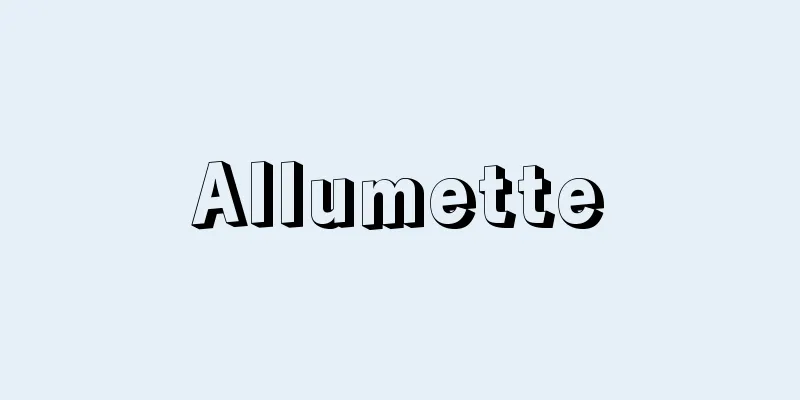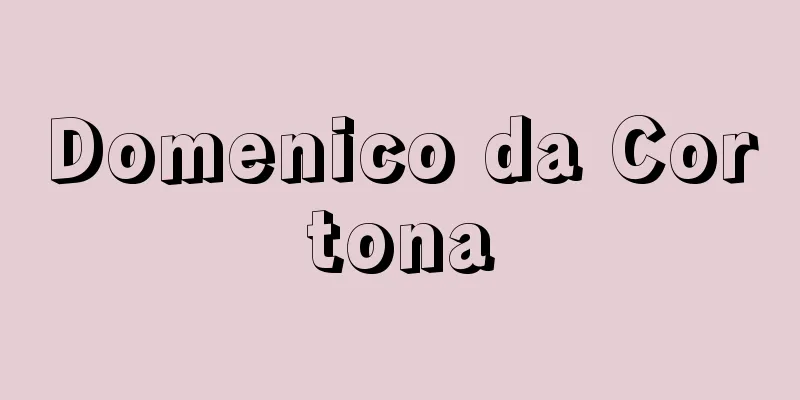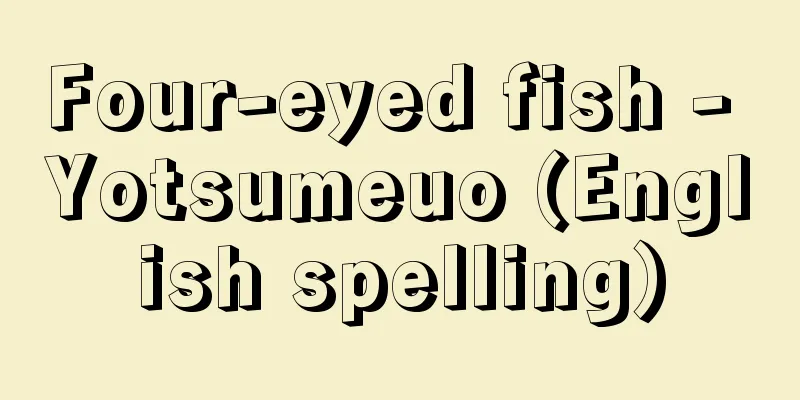Strabismus - Shashi (English spelling)
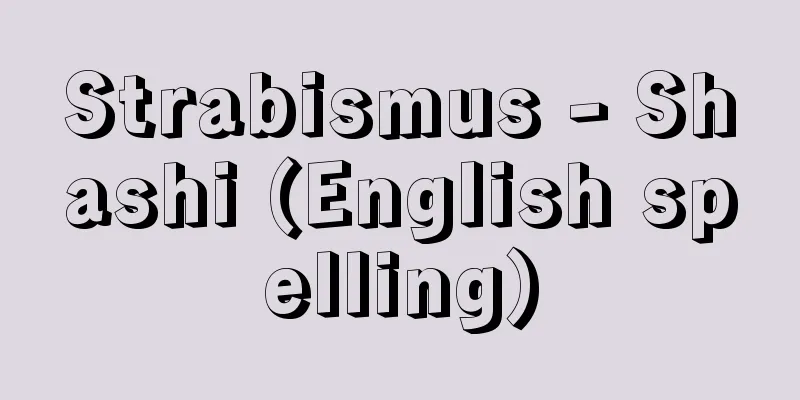
|
◎ One eye is misaligned [What kind of disease is it?] When looking at a target, the gaze of both eyes is normally directed toward the target, but in this case, the gaze of one eye is directed correctly toward the target, while the gaze of the other eye is misaligned. In other words, strabismus is first and foremost an abnormality in the direction of gaze (eye position). Strabismus can also cause other abnormalities. Humans have two eyes, but we are not normally aware that we have two eyes, and they function as if they were one. This is because the brain combines the sensations received by both eyes into one new sensation; this function is called binocular vision. For example, it is thanks to this binocular vision that we can see things in three dimensions. With strabismus, this binocular vision is not possible, so strabismus also causes abnormalities in binocular vision. In addition, strabismus can make it impossible to see with both eyes, which can result in a decrease in vision in the affected eye (this is called amblyopia). As such, strabismus is a disease that involves abnormal eye position, abnormal binocular vision, and amblyopia, a vision abnormality. Depending on the direction of strabismus, it can be classified as esotropia, in which one eye turns inward (exotropia), in which one eye turns outward (exotropia), or vertical strabismus, in which one eye turns either up or down (hypertropia). In addition, a condition in which the patient always has strabismus is called constant strabismus, while a condition in which the patient only has strabismus occasionally is called intermittent strabismus. [Cause] Infant esotropia is a type of esotropia that becomes evident before the age of 6 months. The cause is unknown and it often leads to amblyopia, so if your baby's eyes are turned inward, please take them to a specialist as soon as possible. There is also strabismus caused by hyperopia. When we look at something close, accommodation (focusing on nearby objects) and convergence (moving the eyes inward) occur, but when hyperopia becomes severe enough, when looking at something, the eyes need to adjust more than normal people, causing the eyes to move inward and resulting in esotropia. This type of esotropia is called accommodative esotropia. In very rare cases of accommodative esotropia, which occurs without hyperopia, this is called non-refractive accommodative esotropia. The most common type of exotropia is intermittent exotropia. This type of strabismus occurs when one eye deviates outward and the eyes do not meet when the eyes are tired or sleepy. Children who close one eye in bright places may have this type of strabismus. Strabismus can also occur when the eye movement is not functioning properly due to abnormalities in the muscles or nerves that move the eyes, diseases of other parts of the eye, or diseases inside the head. [Testing and diagnosis] Even if you think you have strabismus, sometimes it is not, or even if you have strabismus, it may not be just strabismus but other eye diseases such as cataracts. Therefore, we first check to see if you have strabismus or other diseases. A condition that appears to be squinting when it is not is called pseudosquinting. The most common type is pseudosquinting in infants. In infants, the root of the nose (the part at the base of the nose between the eyebrows) is not well developed, so this area is wide and the eyes are far apart, meaning the conjunctiva (the white of the eye) is not visible on the inside, making it appear to be squinting at first glance. With pseudosquinting, the nose develops and gets higher as the child grows, and the space between the eyes narrows, making it less likely to look like squinting, but it can still develop into true squinting, so a medical examination by a specialist is still required. In the case of strabismus, a fundus examination is performed to check for abnormalities, poor eye movement, and amblyopia. Next, if the patient has esotropia or amblyopia, we will check to see if they have hyperopia. In this case, we will first administer eye drops that temporarily stop the eye's ability to adjust, and then we will examine the patient. ◎ Treatment with glasses or surgery [Treatment] Treatment for strabismus requires three things: correcting the eye position, enabling correct binocular vision, and improving vision if the patient has amblyopia. ● Refractive correction With accommodative esotropia, which is caused by hyperopia, glasses are worn, but they are meaningless unless the strength of the glasses is appropriate for the eye. For non-refractive accommodative esotropia, bifocal lens glasses or progressive addition glasses are worn, which use the appropriate power for the eye when looking at distant objects and add a convex lens power when looking at close objects, but this type of strabismus is extremely rare. ●Surgery Surgery may be required for strabismus other than accommodative esotropia. Half of cases of accommodative esotropia are partial accommodative esotropia that cannot be corrected with glasses alone, and in these cases both glasses and surgery are required. The surgery only involves shifting the position of the eye muscles, so it is not technically difficult. However, the type and extent of surgery performed on which muscles of which eye will vary depending on the type of strabismus, so the degree of strabismus and the state of binocular vision must be thoroughly examined before surgery. Strabismus surgery in infants and young children requires general anesthesia, so more precise examination is necessary. Hospitalization is not necessarily required for older children and adults, and surgery is usually performed under local anesthesia. ●Optometry Although the eye position can be corrected by wearing glasses or undergoing surgery, binocular vision may not be restored. In such cases, orthoptic treatment may be performed to improve binocular vision or restore vision. Orthoptics is performed by optometrists who have passed the national exam, following the instructions of a doctor, but this does not mean that everyone will be cured. It should be performed in the correct way for those who are suitable, and if it is not very effective, there is no point in continuing it for a long period of time. Other treatments: In cases of strabismus, where the eyeballs do not move smoothly, the general rule is to thoroughly examine the cause and treat that cause. If this does not fix the condition, surgery will be performed. Source: Shogakukan Home Medical Library Information |
|
◎片方の視線がずれている [どんな病気か] ある目標を見るとき、両目の視線はその目標に向かうのがふつうですが、片方の目の視線だけは正しく目標に向かい、もう一方の目の視線がずれている状態です。つまり斜視とは、まず目の視線の向き(眼位(がんい))の異常であるわけです。 斜視はほかにも異常をきたします。人間には目が2つありますが、ふだんは目が2つあるとは意識しておらず、まるで1つのもののようにはたらいています。これは、両目で受け入れた感覚を脳でまとめて、1つの新しい感覚としているからで、このはたらきを両眼視(りょうがんし)といいます。たとえば、ものが立体的に見えるのはこの両眼視のおかげです。斜視があると、この両眼視ができないので、斜視はまた、両眼視の異常もひきおこすのです。 また、斜視があると、両眼視ができなくなり、その結果、斜視のあるほうの目の視力が悪くなることがあります(これを弱視(じゃくし)という)。 このように、斜視は眼位の異常、両眼視の異常、それに弱視という視力の異常にも関与している病気です。 斜視はその方向によって、片方の目が内側に寄る内斜視(ないしゃし)、外側に寄る外斜視(がいしゃし)、上下のいずれかに寄る上下斜視(じょうげしゃし)などに分けられます。 また、常に斜視の状態にあるものを恒常性斜視(こうじょうせいしゃし)、ときどき斜視になるものを間欠性斜視(かんけつせいしゃし)といいます。 [原因] 生後6か月未満に明らかになってくる内斜視に乳児内斜視(にゅうじないしゃし)があります。原因不明で、弱視になることも多い斜視なので、赤ちゃんの目が内側に寄っている場合、なるべく早く専門医の診察を受けてください。 遠視(えんし)が原因でおこる斜視もあります。私たちが近くを見るとき、調節(近くへのピント合わせ)と輻輳(ふくそう)(目の内側への寄せ)がおこりますが、遠視がある程度以上に強くなると、ものを見るとき、ふつうの人より余分に調節をする必要があるため、目が内側に寄って内斜視になるのです。このような内斜視を、調節性内斜視(ちょうせつせいないしゃし)といいます。 調節性内斜視のうち、遠視でないのにおこるものがごくまれにあり、これを非屈折性調節性内斜視(ひくっせつせいちょうせつせいないしゃし)といいます。 外斜視のうちもっとも多いものは間欠性外斜視です。この斜視は、目が疲れたり眠くなったときに、片方の目が外にはずれる、視線が合わなくなるというものです。明るいところで片目をつぶったりする子どもでは、この斜視のことがあります。 目を動かす筋肉や神経の異常、目のほかの部位の病気、あるいは頭の中の病気などで眼球(がんきゅう)の運動がうまくいかなくなっても斜視になることがあります。 [検査と診断] 斜視と思い込んでも、ときとして斜視でない場合や、斜視でも単なる斜視でなく、白内障(はくないしょう)などの他の目の病気であったということもあります。そこで、まず斜視であるかどうか、他の病気がないかどうかを検査します。 斜視でないのに斜視のようにみえるものを偽斜視(ぎしゃし)といいます。よくみられるのは乳児の偽内斜視(ぎないしゃし)です。乳児は鼻根部(びこんぶ)(眉間(みけん)の鼻のつけ根の部分)の発育が悪いため、その部分が広くなり、両目が離れていて内側に結膜(けつまく)(白目(しろめ))がみえず、一見、内斜視のようにみえるものです。偽内斜視は、成長とともに鼻も発育して高くなり、両目の間も狭くなって、斜視にはみえにくくなりますが、ほんとうの斜視になることもあり、やはり専門医の診察が必要です。 斜視の場合には、眼底検査をして異常がないか、眼球の動きが悪くないか、弱視がないかなどを調べます。 つぎに、内斜視や弱視がある場合には、遠視があるかどうかを調べます。この場合、目の調節を一時的に休める目薬を点眼したうえで調べます。 ◎めがねや手術で対応 [治療] 斜視の治療は、眼位を治すこと、正しい両眼視ができるようにすること、弱視があれば視力を向上させることの3つが必要になってきます。 ●屈折矯正(くっせつきょうせい) 遠視が原因でおこる調節性内斜視では、めがねをかけますが、その目に合った度のめがねでなければ意味がありません。 非屈折性調節性内斜視は、遠くを見るときにはその目に合った度、近くを見るときにはそれに凸(とつ)レンズの度を加えるという二重焦点(にじゅうしょうてん)レンズめがね、あるいは累進焦点(るいしんしょうてん)めがねをかけることになりますが、このような斜視は、きわめてまれです。 ●手術 調節性内斜視以外の斜視では、手術を必要とする可能性があります。調節性内斜視でも、半数はめがねだけでは治らない部分調節性内斜視があり、この場合は、めがねと手術の両方が必要となります。 手術は、目の筋肉の位置をずらすだけなので、技術的にはそれほどむずかしくはありませんが、どちらの目のどの筋肉に、どの種類の手術をどの程度行なうかは、斜視の種類によって異なり、手術前に斜視の程度や両眼視の状態を十分検査しておく必要があります。 乳幼児の斜視の手術は、全身麻酔で行なうので、なおさら正確な検査が必要になります。年長児や成人では必ずしも入院は必要ではなく、通常は局所麻酔で手術をします。 ●視能矯正(しのうきょうせい) めがねをかけたり、手術を行なうことで眼位を治すことはできますが、両眼視が回復しないことがあります。このような場合に、両眼視をうまくできるようにしたり、視力を回復させる目的で、視能矯正という治療を行なうことがあります。 視能矯正は、国家試験に合格した視能訓練士が医師の指示に従って行ないますが、これによって、すべての人が治るわけではありません。適応のある人に対して正しい方法で行なうようにし、あまり効果がない場合には、長期間続けることは意味がありません。 ●その他の治療 眼球の動きが悪い斜視では、原因をよく検査して、その原因に対する治療を行なうのが原則です。それでも治らない場合には、手術を行ないます。 出典 小学館家庭医学館について 情報 |
Recommend
MCP (Optics)
... Night vision image intensifiers use high-sens...
Ise
〘 noun 〙 (the noun derived from the conjunctive fo...
Kingstown - Kingstown (English spelling)
It is the capital of St. Vincent and the Grenadin...
appraisal
... That is, first the word "merit rating,&q...
Herodianos (English spelling) Hērōdianos, Ailios
A Greek grammarian from the second half of the 2nd...
Hylocereus guatemalensis (English spelling) Hylocereusguatemalensis
...Mexican Cephalocereus senilis (Haw.) Pfeiff. (...
Ram helmet - Ram helmet
A type of helmet from the Kofun period in Japan, i...
Roan - Kasuge
...Population: 5,024 (1995). The northern part of...
nitrogen monooxide
...When simply referring to nitric oxide, it ofte...
Indian Runner [species] - Indian Runner
...Famous ducks include the Peking Duck (illustra...
Physarum polycephalum (English spelling)
…[Tsubaki Keisuke]. . . *Some of the terminology ...
Group instruction - Issei Shido
…In England, Andrew Bell (1753-1832) and Joseph L...
Compulsory norms - Compulsory norms
A norm that determines certain violations as illeg...
Anisotropic
The state in which physical quantities or properti...
Ice cream
The term ice cream is a cone-shaped snack made of ...
